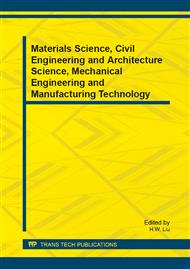p.1156
p.1160
p.1165
p.1169
p.1173
p.1177
p.1181
p.1185
p.1189
Performance Study of Flowing-Over PV/T System with Different Working Fluid
Abstract:
This paper studied the performance of a flowing-over PV/T system with water and Al2O3 nanofluid as the working fluid. The experimental system was built in the outdoors. The parameters of the experiment obtained for processing, analysis, accessing to the electrical efficiency and thermal efficiency. Experimental results show that the flowing-over PV/T system with Al2O3 nanofluid as working fluid has a higher overall efficiency than that with water.
Info:
Periodical:
Pages:
1173-1176
Citation:
Online since:
January 2014
Authors:
Keywords:
Price:
Сopyright:
© 2014 Trans Tech Publications Ltd. All Rights Reserved
Share:
Citation:


